10 UNESCO World Heritage Sites to Visit in the Balkans
The Balkans, a region steeped in history, culture, and natural beauty, boasts a wealth of UNESCO World Heritage Sites. In this article, we explore...
Nikolina Konjevod 15 July 2024
Nestled in the city of Amritsar in Northwestern India is the iconic Harmandir Sahib or Darbar Sahib, better known as the Golden Temple. This sublime masterpiece of worship is undoubtedly the most recognizable gurudwara or Sikh temple in the world. It is also one the five Akal Takhts or seats of authority recognized in Sikhism.
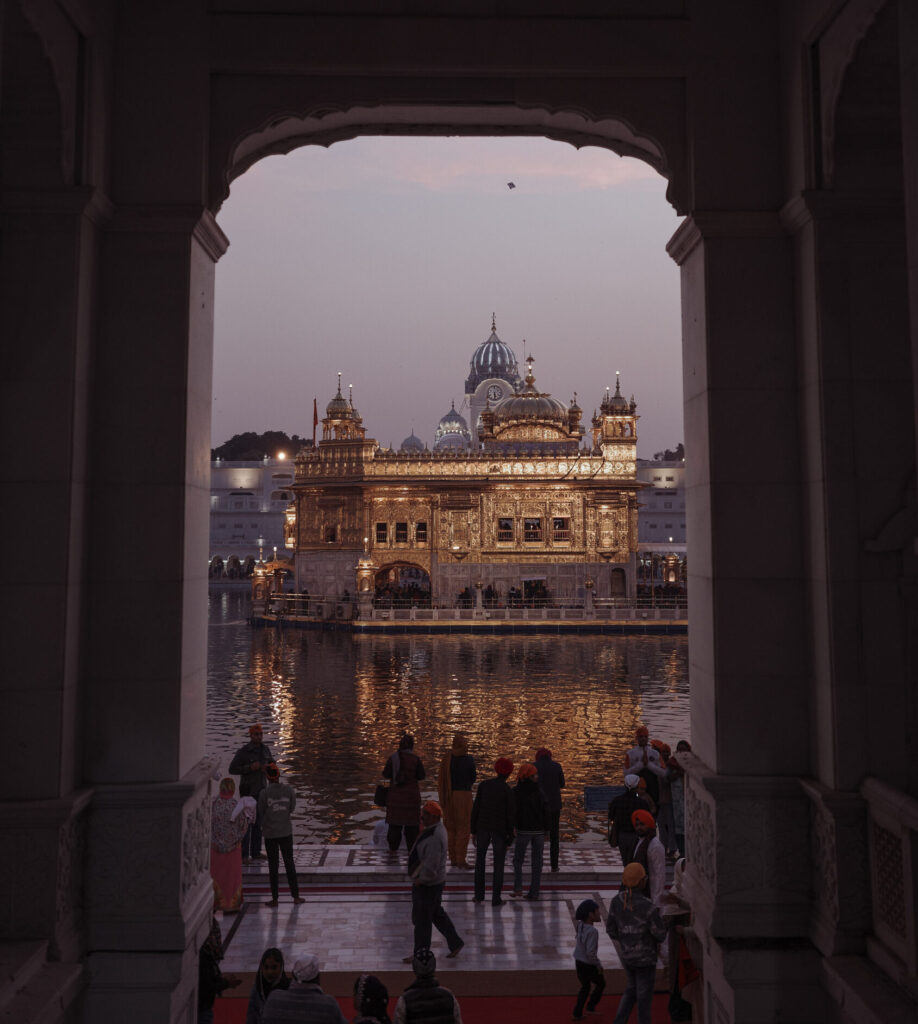
View of the Golden Temple in Amritsar, India. Photograph by Rohan Monga in December 2023.
Sikhism, originated in the late 15th century in the Indian subcontinent. It was founded by Guru Nanak, who preached a distinctive spiritual path emphasizing the values of devotion, humility, and service to humanity. The religious philosophy of Sikhism shows continuity with and a rejection against the prevailing Hindu thought, as well as an adoption of the monotheistic philosophy of Islam. The Golden Temple embodies the principles of inclusivity and sanctuary, welcoming both visitors and pilgrims irrespective of their background or belief.
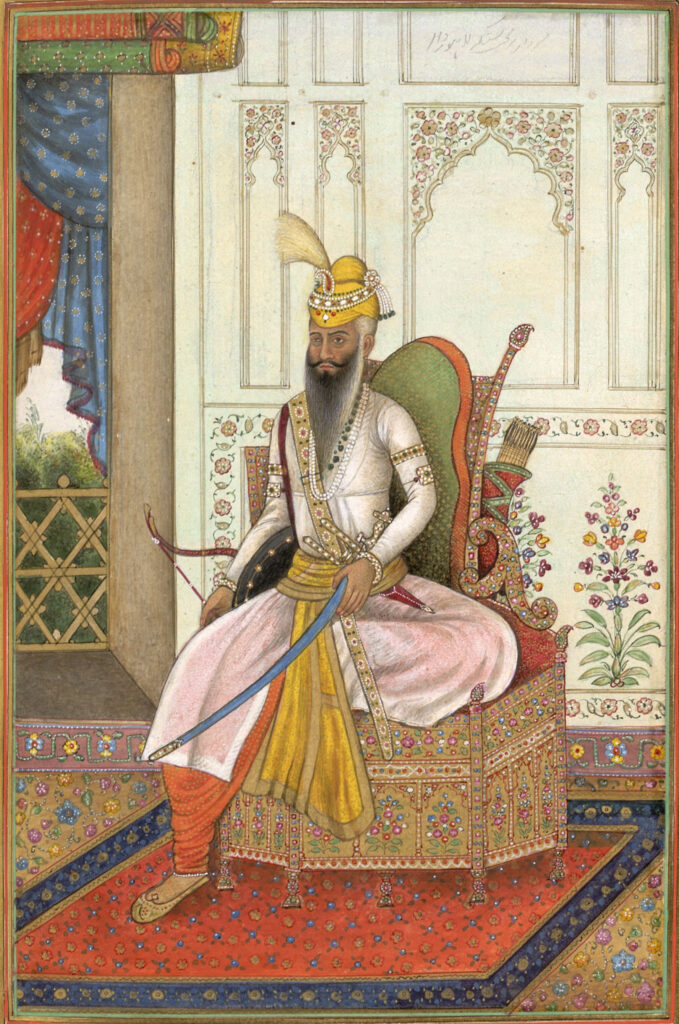
Illustration of Maharaja Ranjit Singh from Colonel James Skinner’s Tazkirat al-Umara, ca. 1830. British Library via Wikimedia Commons (Public Domain).
It is rumored that the land for the Golden Temple was donated by the great Mughal emperor, Akbar, to Guru Ramdas, the fourth of the ten revered gurus of Sikhism. However, it was under the guidance of the fifth, Guru Arjan Dev Ji, that the temple was conceived. In 1588, he not only laid the foundation stone but is believed to have actively participated in the manual labor of its construction. Thereby he embodied the virtue of service intrinsic to Sikhism.
Completed in 1604, the Golden Temple is an exemplar of the South Asian architectural tradition, skillfully synthesizing Hindu, Islamic, and Persian artistic influences. The result is a harmonious structure that reflects the inclusive spirit of Sikhism and the cultural amalgamation inherent in the sacred edifice.
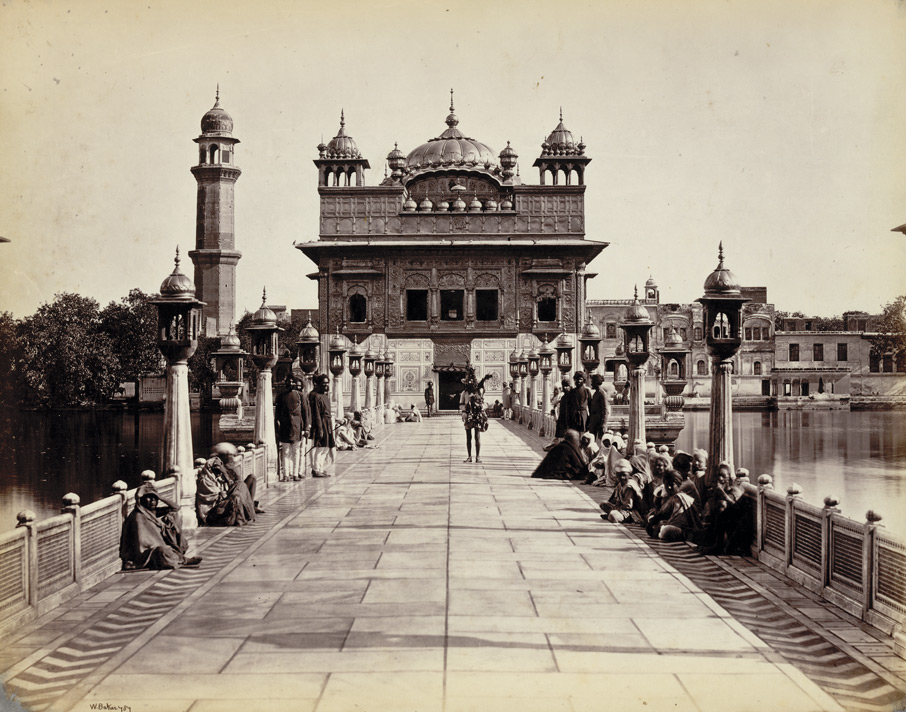
View of the Causeway of the Golden Temple in Amritsar, ca. 1870. Photograph via Wikimedia Commons (Public Domain).
The most captivating and immediately apparent feature of the Golden Temple is the resplendent gold façade. The upper floors of the two-floor sanctum and the domes are encased in gold.
In 1830, Maharaja Ranjit Singh or Sher-e-Punjab (the “Lion of Punjab”), the first ruler of the Sikh Empire covered the structure of the temple with over 350 lbs. (162 kgs) of 24-carat gold. Subsequently, during renovations in the 1990s, over 1000 lbs. (500 kgs) of gold were added.
This golden façade creates a mesmerizing effect in the daytime that transforms into a warm and ethereal glow as the sun sets. This captivating spectacle draws at least 100,000 pilgrims and visitors every day, contributing to the awe-inspiring aura of the sacred site.
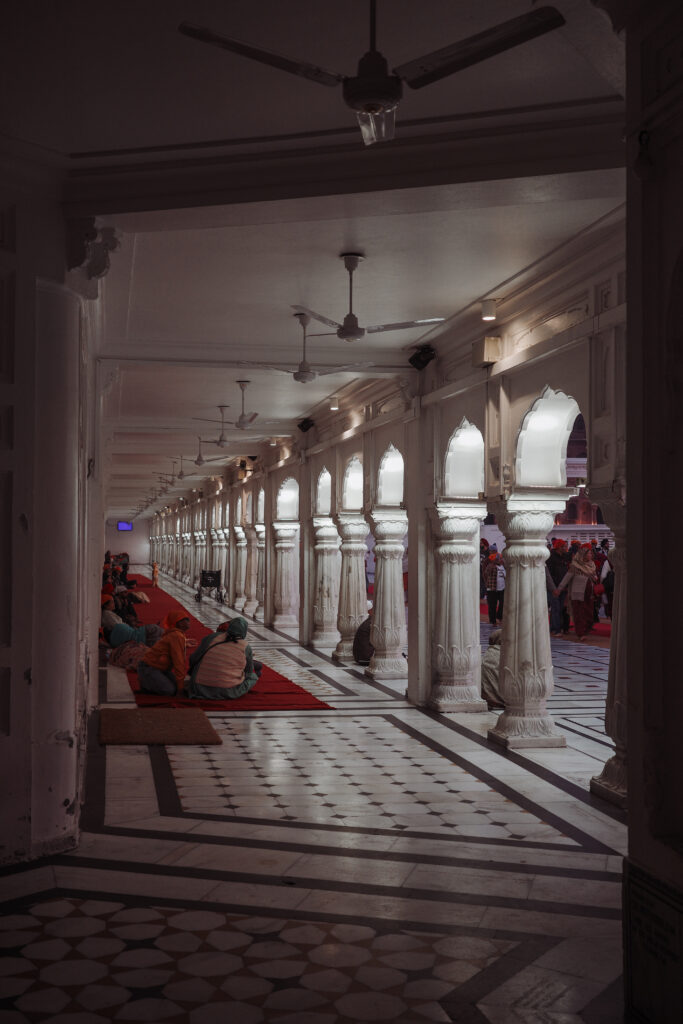
View of the Golden Temple in Amritsar, India. Photograph by Rohan Monga in December 2023.
The Golden Temple is nestled in the center of the sacred pool known as the Amrit Sarovar with a depth approaching close to 20 feet. The city of Amritsar derives its name from the Amrit Sarovar.
Guided by four entrances, visitors traverse marble floors and ornate archways, leading to a central sanctum where the Guru Granth Sahib, the sacred literature of the Sikhs, is enshrined. Notably, the shrine is deliberately positioned at a lower level, a departure from the typical elevation seen in Hindu temple architecture where the central shrine sits on a platform. This intentional placement emphasizes the virtue of humility that is intrinsic to Sikhism.
The structure manifests as a harmonious blend of gold leaf, marble, and reflective waters that is enhanced by the serene recitation of the Gurbani, the sacred writings and hymns found in the holy Guru Granth Sahib.
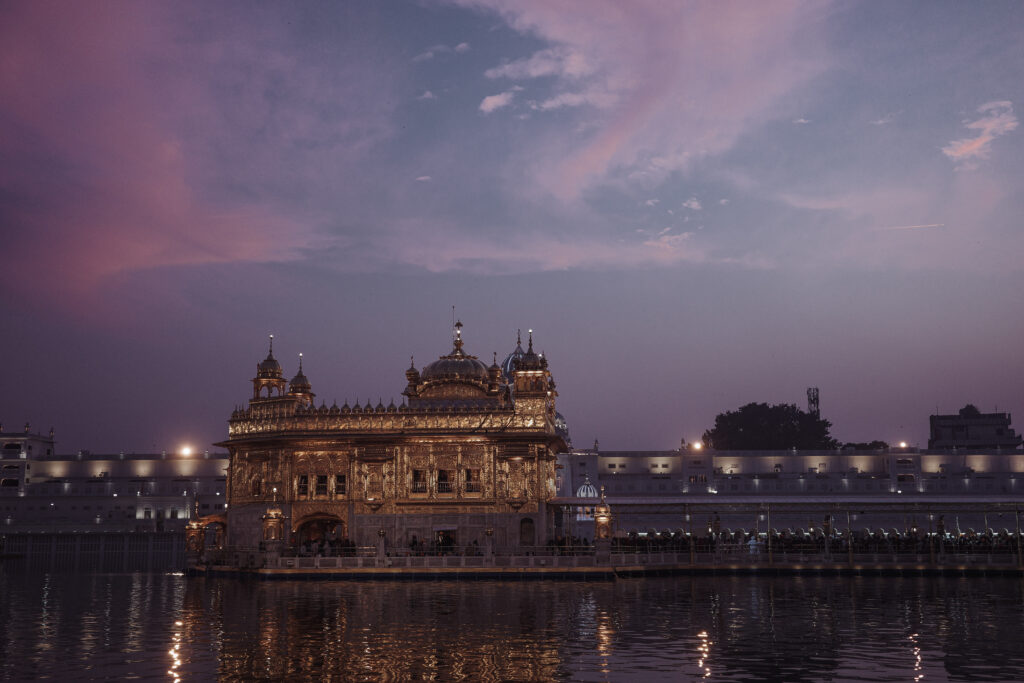
View of the Golden Temple in Amritsar, India. Photograph by Rohan Monga in December 2023.
The Sikh tradition of langar, established in 1481, is a cherished practice maintained at the Golden Temple. Donations entirely fund this communal kitchen and it is run by dedicated volunteers who undertake tasks like cooking, cleaning, and serving langar, exemplifying the Sikh ethos of collective contribution. Approximately fifty thousand meals are served to visitors each day at the Golden Temple, and this number doubles during religious events.
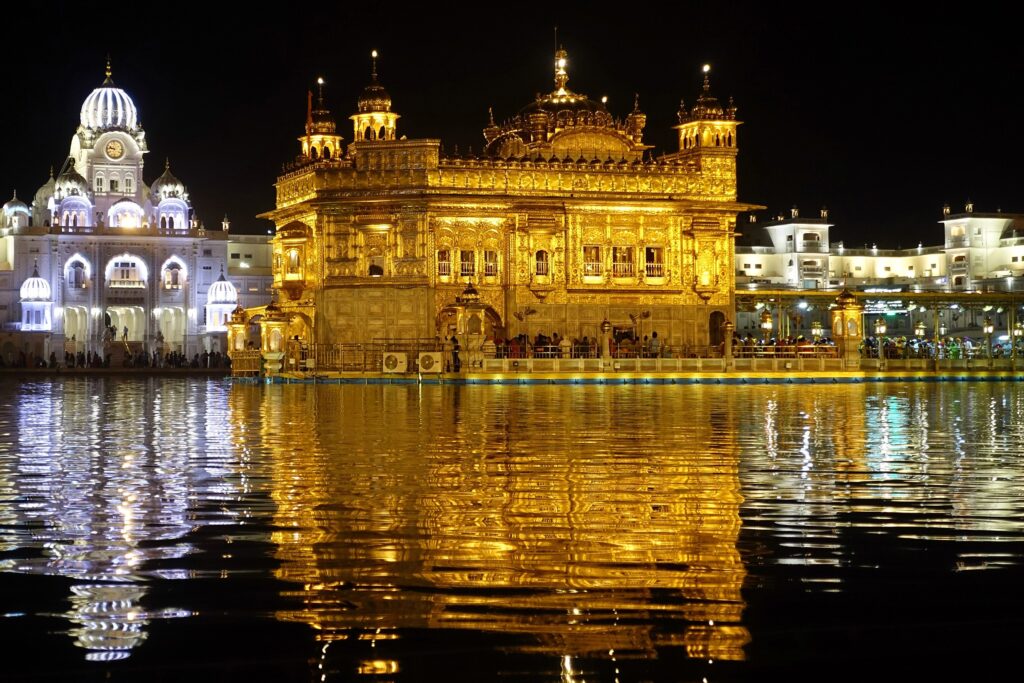
View of the Golden Temple in Amritsar, India. Photograph by Marsmux in March 2018 via Wikimedia Commons (CC-BY-SA-4.0).
The Golden Temple has weathered the storms of history and borne witness to events of significance. In June 1984, however, this religious sanctum faced a dark chapter during Operation Blue Star, where the Indian Government ordered the removal of Sikh militants from the buildings of the Golden Temple. This intervention resulted in tragic civilian and soldier casualties, along with damage to the architectural structures. Despite this somber chapter, the resilience of the Sikh community and the enduring power of faith stand as testaments to the strength and unwavering spirit that continues to define the Golden Temple.
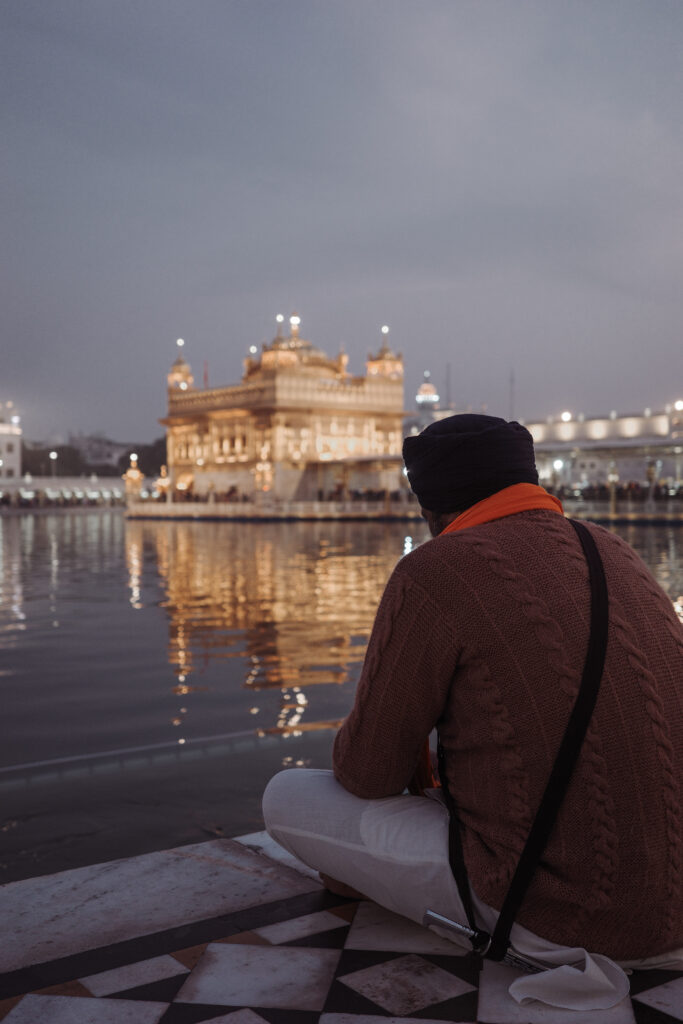
View of the Golden Temple in Amritsar, India. Photograph by Rohan Monga in December 2023.
The Golden Temple, a rare architectural heritage of the Sikh religion, stands as a profound symbol of faith, resilience, and the enduring spirit of the Sikh community. A visit to the Golden Temple is not merely a tour; it is an encounter with the sublime, where individuals find themselves transported to a realm of profound peace and introspection.
DailyArt Magazine needs your support. Every contribution, however big or small, is very valuable for our future. Thanks to it, we will be able to sustain and grow the Magazine. Thank you for your help!